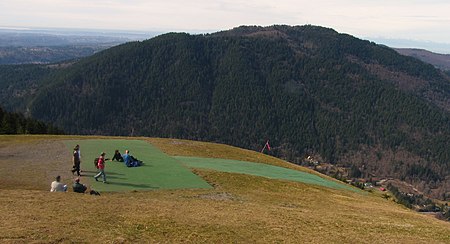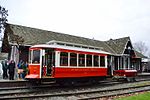Squak Mountain

Squak Mountain is the second most westerly mountain of the Issaquah Alps mountain chain in Washington state. It is situated between Cougar Mountain to the west and Tiger Mountain to the east. Interstate 90 parallels the base of the north side of the mountain. Much of the Squak Mountain watershed drains into Lake Sammamish. Most of the mountain is protected by Squak Mountain State Park and the Cougar/Squak and Squak/Tiger Corridors of King County. Squak Mountain actually consists of three major peaks: the Central Peak (Elevation 2024 feet), the West Peak (Elevation 1995 feet), and the Southeast Peak (Elevation 1673 feet). The name "Squak" comes from the Southern Lushootseed placename /sqʷásxʷ/, which is also the source of the name Issaquah Creek and the city of Issaquah.
Excerpt from the Wikipedia article Squak Mountain (License: CC BY-SA 3.0, Authors, Images).Squak Mountain
Equestrian Loop,
Geographical coordinates (GPS) Address Nearby Places Show on map
Geographical coordinates (GPS)
| Latitude | Longitude |
|---|---|
| N 47.496388888889 ° | E -122.03833333333 ° |
Address
Equestrian Loop
Equestrian Loop
98027
Washington, United States
Open on Google Maps






